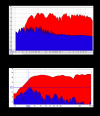Bass response is nearly non-existent. FR is rubbish or there is no sense in the world. Resonances are a bad thing for speakers to have. A whole string of them is not a plus no matter the step response. This has symmetrical directivity, but that isn't a good directivity plot. The opinion cars have no bass modal boundaries is another misconception that is too wrong to let pass. Transient response and FR are intertwined. You don't get good transient response with the FR this speaker has. Don't mistake step response for something else please. I am glad you sent it in, but it is a wrong headed speaker design. There is clearly a market for it unfortunately.
Ok, the FR is non-flat. So what? Does a flat FR guarantee translation? For some it does not. Ok, resonance is not good. Perhaps you are right there. It is true for far field and maybe also applies to nearfield. Symmetrical directivity is a plus, some people say it's particularly advantageous in the nearfield. This is something for which software can't correct. Cars, compared to rooms, certainly have less modal ringing below 80Hz than rooms of normal construction. I have shown (
look at 'perfect decay' but I will try to post the image here.) that a plywood room will exhibit virtually perfect decay. When you hear a car roll by with a subwoofer banging, all that you hear is not ringing in the car. Are there modes in a car, of course, but not like in rooms and that is exactly one reason why using a speaker like this is useful: its sufficiently different as to give you a new perspective.
I'm here to tell you that, until now, I have perceived the transient response of this speaker to be excellent. For sure, I will be reviewing my subjective perceptions once I get it back. Amir didn't post the impulse response so, if not step response, what is the indicator of good transient response besides low-resonances? And even if resonances impede transient response - which I understand they do due to minimum phase relationship - which frequencies need to ring to produce the most detriment to transients? Transients are high frequency but there are also percussive sound elements which are lower in frequency. This speaker certainly has ringing at many frequencies but it is not 'mushy' to listen to, that I can assure you.
If I am missing something about step response then please fill me in about the specific points you feel that I lack. I understand it to be an alignment of drivers and, assuming otherwise high 'preference' qualities (low-resonance included) it can make an improvement to the image and depth. Depth is related to dynamics which is related to transient response.
This is not entirely a misguided speaker design because it is a tool for mixers and it helps some of them. Your needs are not the market, clearly, but this speaker helps some to achive 'translation'. If you are not mixing then that quality is totally lost for you. Can this speaker genre be improved? Perhaps but first we need to define 'translation'. I have already called for this.

